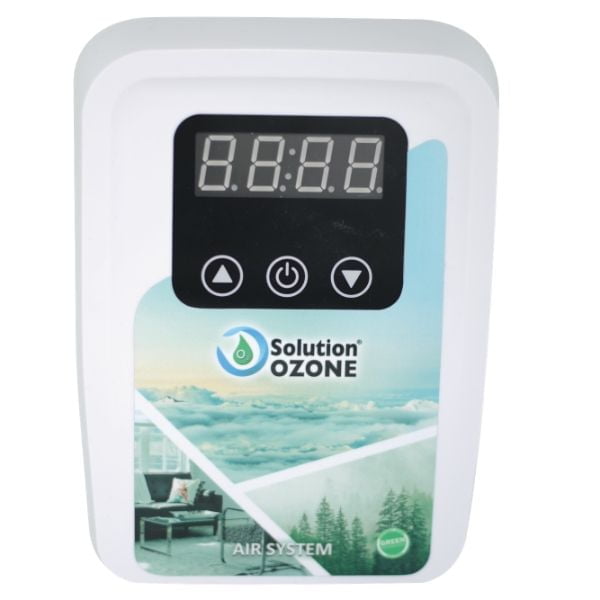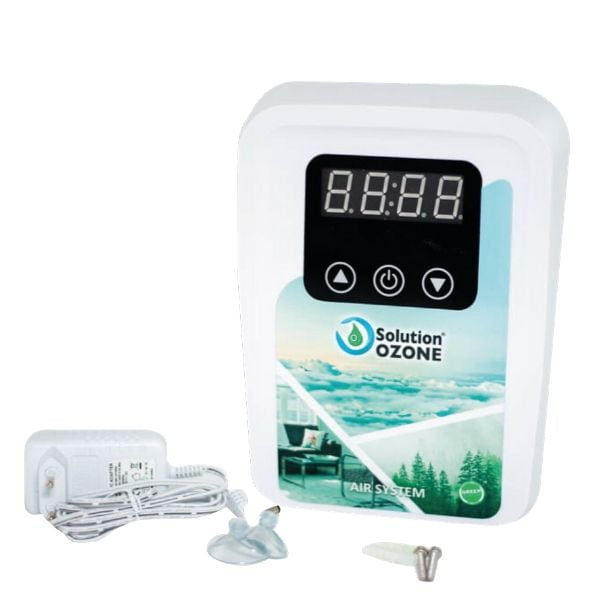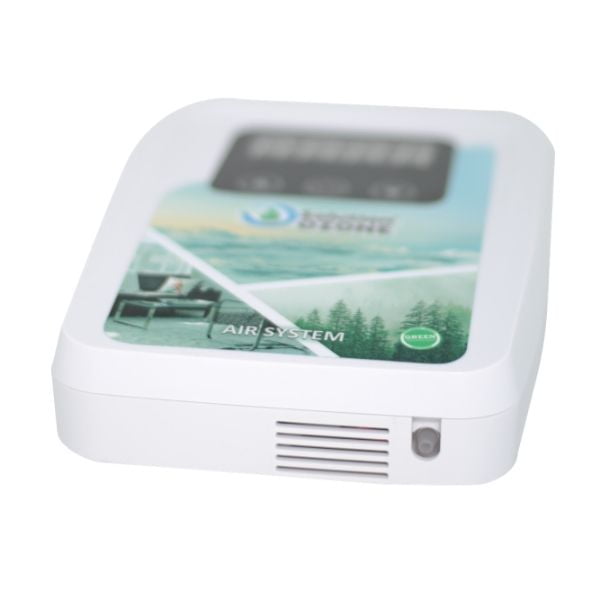Description
The Domestic Air Treatment System is indicated to remove odors such as cooked, cigarette smoke, animals, etc.
It also eliminates bacteria, viruses, and any other harmful substances in the air due to its high oxidative power.
The ozone generator purifies the air and prevents the spread of disease. Ozone is a powerful disinfectant that is even more effective than chlorine, with the advantage of not leaving residues and being 100% natural.
It eliminates allergens from mites, animals, and pollen, reduces the symptoms of allergies, eliminates odors. It also clean, purify and disinfects the air. It is an easy-to-handle generator.
Ozone is a molecule composed of three oxygen atoms (O3) and is easily absorbed by the human body. The extra molecule of oxygen present in the ozone is separated leaving only O2 which is the molecular form present in the air that one breathes.
At the same time, ozone separation allows for high oxygenation and oxidation processes, which are efficient in treating a wide variety of diseases. Among others, ozone has analgesic, anti-inflammatory, draining, oxygenating, antioxidant and anti-free radicals properties.
Ozone (O3) is a gas, heavier than air, which by decomposition releases oxygen (O2) and mono atomic oxygen (O) which is highly oxidizing.
The ozone’s oxidizing action is responsible for the elimination of odor-producing organic substances and for the destruction of bacteria and viruses in the air. Food making creates odors, vapors, and particles that are not caught by the mechanical and electrostatic filters of the exhaust fans.
By oxidation, the ozone generator is able to eliminate the fat particles and those that carry the odors, ensuring a cleaner and fresh air.
Ozone tests carried out on samples with 600 CFU/m³ (CFU is the colony-forming unit used to estimate the number of viable bacteria or fungal cells in a sample) reveal the efficiency of ozone by killing most microorganisms definitively.
In the tests carried out, with a concentration of 0.5ppm of ozone, we verified an efficiency in the reduction of 70% of CFU/m³. However, these values rise above 90% when a concentration of 2.5 ppm ozone is used.
| Ozone Concentration | 0.5 ppm | 2.5 ppm |
|---|---|---|
| Before Ozonization | 600 CFU/m³ | 600 CFU/m³ |
| After Ozonization | 175 CFU/m³ | 35 CFU/m³ |
| Reduction (%) | 70% | 94% |
Note: This table refers to tests performed, so the results are approximate as they reflect average values obtained.
Remember that in high concentrations, ozone inhalation can become toxic. Therefore, it is recommended that no one is present in a room where the ozone concentration levels are above 0.1 ppm. In these situations, as a guarantee of absolute security, space must be free for 40 minutes and then people can return normally.









